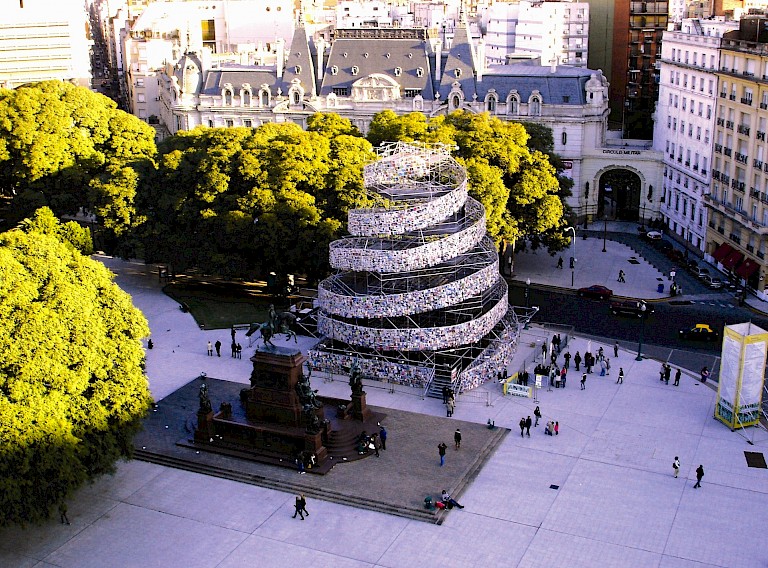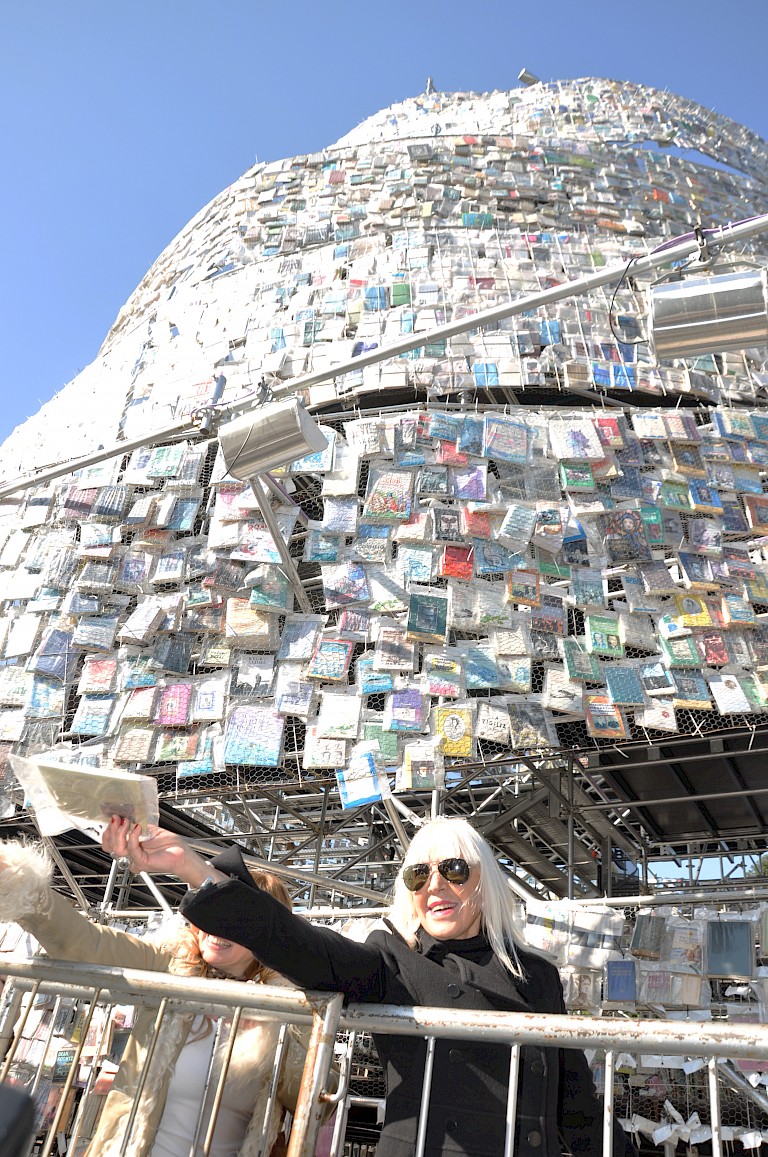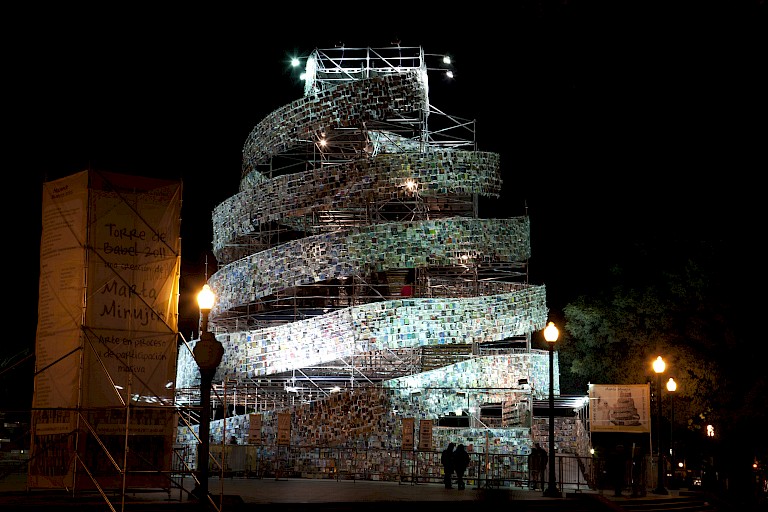



Marta Minujín, an Argentinian artist, is most known for her conceptual, performative, and participatory work, which often deals with political issues in a monumental and radical fashion, incorporating elements of humor and the ridiculous (for example, a Venus de Milo cut from cheese). The notion of destruction is also a prevalent motif in Minujín’s work. For example, The James Joyce Tower in Bread (Dublin, 1980), made of 5,000 loaves, was made to be “destroyed” by the public as they took the bread home with them. This work is important to note in relation to the Torre de Babel, as is the Parthenon of Books (1983), which consisted of a Parthenon-shaped construction of 30,000 books that had been banned by the Argentinian dictatorship during the early 1980s. In each of these pieces, the building materials have three functions: to make up the structure of the work, to comment on a political or cultural situation, and to be utilized and distributed to the public.
The title of Minujín’s work refers to the myth of the Tower of Babel, which has its origins in the Judeo-Christian tradition in the book of Genesis, but is also referenced by other ancient traditions in similar stories. The myth is of a powerful group of people striving to build a tower to heaven. God confuses them by inventing languages, thus ending their ability to communicate and forcing them to abandon the project and scatter over the earth. The moral of the story is about pride, and the myth points to the origins of languages.
The Tower of Babel has been a common motif throughout art history and a symbol of language and knowledge for Western culture. In this work, Minujín played on these themes, but the work also served a greater function in the public realm. It referenced the innate human desire to understand and be understood, as well as the frustration that results when there is an inability to communicate and learn from one another. Participants who came to Torre de Babel were given the opportunity to understand and be understood. Those who took away the books are re-enacting the myth, destroying the tower and scattering the knowledge and languages out into the world. They came together with a common purpose for the sake of art, which, as Minujín says, ultimately needs no translation.
All copyright belongs to Shanghai Academy of Fine Arts, Shanghai University.



